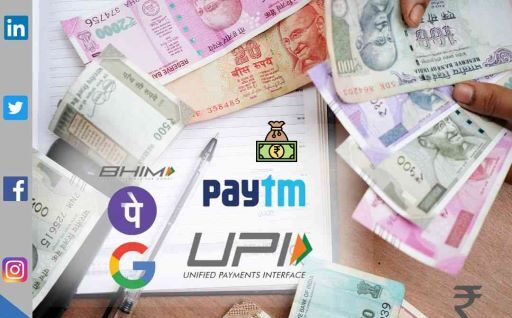Your cart is currently empty!
Category: Business News
Stay up-to-date with the latest IT, Business, and Corporate News on Jobs Innovators. Explore in-depth articles, insights, and trends to fuel your knowledge and stay ahead in the dynamic world of business and technology.

The unemployment rate in Alaska decreased slightly to 3.7 percent in March 2023

In the wake of the COVID-19 pandemic, many states in the United States have experienced fluctuations in their unemployment rates. Alaska, in particular, saw a slight decrease in its unemployment rate to 3.7 percent in March 2023. This may seem like a small change, but for those who are now able to find employment, it can make a significant difference. However, there are still many challenges that individuals and the state as a whole face in maintaining a stable and thriving job market.
In this blog post, we will explore the current state of employment in Alaska, the factors contributing to the recent decrease in unemployment, and what the future may hold for those seeking work in the state.
Alaska’s unemployment rate decreased slightly to 3.7 percent in March 2023, according to the Alaska Department of Labor and Workforce Development (DOLWD). There were more job openings than workers looking for jobs in February, with two job openings available for every unemployed worker. The statewide unemployment rate is approaching the national average of 3.5 percent.
Unemployment rates in different areas of Alaska varied, with the Anchorage area and Kodiak Island Borough having the lowest rates at 3 percent, and the Aleutians East Borough and Aleutians West Census Area having the lowest unemployment rates at 1.3 and 1.9 percent, respectively.
The total number of jobs in Alaska increased by 2.3 percent year over year, with 7,000 more jobs since March 2023. The private sector drove the job growth, with 500 new federal, state, and local government jobs amounting to only a 0.6 percent increase.
The transportation, warehousing, and utilities sector showed the strongest job gains in March, with an increase of 1,400 jobs since March 2022, while the leisure and hospitality sector added 2,000 jobs year over year. These sectors suffered significant losses during the COVID-19 pandemic, but are now approaching or exceeding pre-pandemic job levels. All industries added jobs, except for the information sector, which remained flat with 4,700 jobs.
FAQ
Q: What is the unemployment rate?
A: The unemployment rate is the percentage of the total labor force that is unemployed but actively seeking employment and available to work.
Q: Why is the unemployment rate important?
A: The unemployment rate is an important economic indicator as it provides insight into the health of the labor market and the overall state of the economy.
Q: How is the unemployment rate calculated?
A: The unemployment rate is calculated by dividing the number of unemployed individuals by the total labor force and multiplying by 100.
Q: What is the labor force?
A: The labor force is the total number of individuals who are either employed or unemployed but actively seeking employment.
Q: What factors can affect the unemployment rate?
A: The unemployment rate can be affected by various factors such as economic growth, industry trends, technological advancements, government policies, and seasonal fluctuations.
Q: What does a decrease in the unemployment rate signify?
A: A decrease in the unemployment rate signifies an improvement in the labor market as more people are finding jobs and becoming employed. It can also indicate a stronger economy and increased consumer spending.
Q: Is a 3.7 percent unemployment rate considered low?
A: Yes, a 3.7 percent unemployment rate is generally considered low and can indicate a relatively healthy labor market. However, it’s important to note that certain factors, such as the size of the labor force, industry trends, and regional variations, can impact what is considered a low or high unemployment rate.

New York City Invests $30 Million in Minority Owned Businesses

New York City Invests $30 Million in Minority-Owned Businesses : A Step Towards Economic Equity
On April 26, 2023, New York City announced the launch of a $30 million program aimed at supporting minority-owned businesses. The initiative is a part of the city’s broader effort to promote economic equity and provide opportunities for historically marginalized communities.
The program will provide grants and loans to businesses owned by people of color, women, veterans, and individuals with disabilities. The funds will help these businesses to expand, hire more employees, and enhance their overall competitiveness. Additionally, the program will offer technical assistance and mentorship to participating businesses, providing them with the tools they need to succeed in a competitive market.
This investment in minority-owned businesses comes at a critical time, as these businesses have been disproportionately affected by the economic fallout of the COVID-19 pandemic. According to a report by the National Bureau of Economic Research, businesses owned by people of color were more likely to close during the pandemic and less likely to receive federal relief funds.
The new program is also a step towards addressing the longstanding racial and economic disparities that have plagued New York City for decades. According to a report by the Federal Reserve Bank of New York, minority-owned businesses face significant barriers to accessing capital and resources, hindering their ability to grow and compete with larger, more established businesses.
By investing in minority-owned businesses, New York City is not only providing much-needed financial support but also working towards a more equitable economic landscape. The program aims to create new opportunities for businesses that have historically been left out of the mainstream economy, allowing them to contribute to the city’s economic growth and development.
The $30 million investment is just the beginning of what could be a larger effort to support minority-owned businesses in New York City. The city has already established a goal of awarding 30% of its contracts to minority and women-owned businesses by 2025, and the new program could be a key tool in achieving that goal.
Overall, New York City’s $30 million program to support minority-owned businesses is a welcome step towards promoting economic equity and addressing longstanding disparities. By providing grants, loans, and technical assistance to businesses owned by people of color, women, veterans, and individuals with disabilities, the city is helping to create new opportunities and level the playing field in the competitive world of business. This investment is a critical step towards building a more equitable, just, and prosperous New York City for all.
Key points from the blog post
- New York City has launched a $30 million program to support minority-owned businesses.
- The program will provide grants, loans, technical assistance, and mentorship to businesses owned by people of color, women, veterans, and individuals with disabilities.
- This investment is a step towards promoting economic equity and addressing longstanding racial and economic disparities in the city.
- Minority-owned businesses have been disproportionately affected by the COVID-19 pandemic, and this program aims to provide them with much-needed financial support and resources.
- By investing in minority-owned businesses, New York City is working towards creating new opportunities and leveling the playing field in the competitive world of business.
- The $30 million investment is just the beginning of what could be a larger effort to support minority-owned businesses in the city.
FAQ
Q: Who is eligible for the $30 million program in New York City?
A: The program is aimed at supporting minority-owned businesses, including those owned by people of color, women, veterans, and individuals with disabilities.
Q: What types of support will the program provide to participating businesses?
A: The program will provide grants and loans, as well as technical assistance and mentorship to help businesses expand, hire more employees, and enhance their overall competitiveness.
Q: Why is this program important?
A: This program is important because it is aimed at addressing longstanding racial and economic disparities in New York City. By investing in minority-owned businesses, the city is working towards creating new opportunities and promoting economic equity.
Q: How does this program fit into the city’s broader efforts to support minority-owned businesses?
A: The program is a part of the city’s broader efforts to promote economic equity and provide opportunities for historically marginalized communities. The city has already established a goal of awarding 30% of its contracts to minority and women-owned businesses by 2025, and the new program could be a key tool in achieving that goal.
Q: How has the COVID-19 pandemic affected minority-owned businesses?
A: Minority-owned businesses have been disproportionately affected by the pandemic. According to a report by the National Bureau of Economic Research, these businesses were more likely to close during the pandemic and less likely to receive federal relief funds.
Q: Is the $30 million investment enough to make a significant impact?
A: While $30 million is a significant investment, it may not be enough to fully address the challenges faced by minority-owned businesses in New York City. However, it is a step in the right direction and could lead to larger efforts to support these businesses in the future.

Florida unemployment rate 2023 and Identify the unemployment rate in Miami

The unemployment rate in Florida stayed at 2.6%, Determine Miami’s unemployment rate.
In this blog, we will take a deep dive into the unemployment rate in the state of Florida. Analyzing Florida’s Unemployment Rate: Trends, Causes, and Impacts on the State’s Economy” We will start by examining historical trends in the rate, looking at how it has changed over time and what factors have contributed to those changes. We will also explore the current state of the unemployment rate in Florida, including recent developments and how the state compares to the rest of the country.
By the end of this blog, readers will have a comprehensive understanding of the unemployment rate in Florida, its causes and impacts, and what is being done to address this important issue.
Florida’s unemployment rate remained at 2.6% in March as construction jobs decreased for a third consecutive month and service-related jobs continued to dominate new hiring. The state Department of Economic Opportunity stated on Friday that there were around 283,000 unemployed Floridians in the middle of March, which is 49,000 fewer than in March 2022 and 1,000 fewer than in February. The Miami-Fort Lauderdale-West Palm Beach region had Florida’s lowest rate in March (2.2%), according to metropolitan statistical areas.
The workforce reached 10.92 million individuals, up 250,000 from March 2022 and 43,000 from mid-February. Since June 2021, according to Jimmy Heckman, the department’s chief of workforce statistics and economic research, growth in the state’s labour force has surpassed the national average. The leisure and hospitality industries, which generated 104,100 jobs between March 2022 and March 2023, were the growth’s foundation. The education and health services industries then added 91,600 new employment.
In the meantime, the number of available jobs in the retail and wholesale sectors has increased. Transport and services increased by 69,500 each year. Simultaneously, the state added 15,100 construction jobs and 12,900 manufacturing positions. However, the construction business lost 2,300 jobs from February to March, marking the third consecutive month of losses. Heckman explained that recent rate hikes have put “a lot of downward pressure on the demand for new construction, for new buildings, especially in residential construction,” putting “a lot of pressure on the construction industry.”
According to the Department of Economic Opportunity, private-sector employment climbed by 0.1%, or 12,100 jobs, in March. It also hinted to a probable tightening of the labour market, citing over 400,000 positions now advertised online in Florida. The state had over 620,000 job opportunities in March. According to the US Department of Labour, Florida was one of 32 states where the jobless rate stayed stable from February to March. Another 18 states saw their rates fall.
Unemployment rates in large states were 4.4% in California and Illinois, 4.1% in New York, and 4% in Texas. According to the Department of Labour, the national unemployment rate fell from 3.6% in February to 3.5% in March. Orlando-Kissimmee-Sanford, Tampa-St. Petersburg-Clearwater, Pensacola-Ferry Pass-Brent, and Jacksonville each had 2.6%. The greatest rates were seen in the Villages, Homosassa Springs, and Sebring areas, at 3.8%. The statewide unemployment rate is adjusted for the season, but the regional rates are not.
FAQ
- What is the current unemployment rate in Florida?
- Answer: As of March 2023, the seasonally adjusted unemployment rate in Florida was 2.6%, according to the Florida Department of Economic Opportunity.
- How does Florida’s unemployment rate compare to the national average?
- Answer: Florida’s unemployment rate is currently slightly lower than the national average, which was 3.9% in March 2023.
- What industries have been most affected by unemployment in Florida?
- Answer: During the COVID-19 pandemic, the leisure and hospitality industry was hit particularly hard by job losses and unemployment in Florida. Other industries that have been affected include retail trade, education and health services, and professional and business services.
- What policies and programs are in place to support unemployed individuals in Florida?
- Answer: The state of Florida offers unemployment insurance benefits to eligible individuals who have lost their jobs through no fault of their own. Additionally, there are job training and reemployment assistance programs available to help unemployed individuals find new jobs.

Apple Sets Foot in India with the Launch of its First Official Store in Mumbai
Apple First Official Store in India, Mumbai

This marks a significant milestone for Apple, which has been eyeing the Indian market for a long time. India is one of the world’s largest smartphone markets, with over 500 million users, but Apple has struggled to gain a significant foothold in the country due to high import tariffs, price-conscious consumers, and competition from local players. The launch of its first official store in India is a step towards addressing these challenges and expanding its presence in the country.
The store is spread over 20,000 square feet and is the largest Apple Store in India. It offers the complete range of Apple products, including iPhones, iPads, Macs, Apple Watches, and other accessories. The store’s design follows Apple’s signature aesthetic, with an emphasis on minimalism, clean lines, and natural materials. It also features a Genius Bar, where customers can receive technical support, workshops, and other services.
The launch of the Apple Store in India has been met with great excitement from Apple fans, who have been eagerly sharing pictures and videos of the store on social media. The store’s opening coincided with the festive season in India, which is a time when many consumers are on the lookout for new gadgets and electronics. Apple’s timing couldn’t have been better, as the launch of its first official store in India has generated a lot of buzz and excitement among consumers.
Overall the launch of Apple’s first official store in India is a significant step for the company, as it seeks to expand its presence in one of the world’s largest smartphone markets. The store’s opening has been met with great enthusiasm from Apple fans, and the company’s decision to open the store during the festive season is a strategic move that is likely to pay off. It remains to be seen how Apple’s retail presence in India will evolve, but the company’s first steps into the Indian market are certainly promising.
Apple Store Design
Apple is known for its iconic store designs that feature clean lines, minimalist aesthetics, and an emphasis on natural materials. The company’s retail stores are designed to be a physical extension of its brand, providing customers with an immersive and personalized shopping experience.
The stores are designed to be intuitive and easy to navigate, with products displayed on tables and shelves that are arranged in a logical and visually pleasing manner. The stores feature a central avenue that leads customers through the space, with tables and displays arranged along the sides. The Genius Bar, where customers can receive technical support and other services, is typically located at the back of the store.
Apple’s store design is a reflection of its commitment to quality, innovation, and customer experience. The stores are designed to be more than just places to buy products; they are spaces where customers can connect with the brand and its values, and experience the latest technology in a warm and inviting environment.
FAQ
- Q: Where is the Apple store located in Mumbai?
- A: The Apple store is located at Maker Maxity Mall in the Bandra Kurla Complex (BKC) area of Mumbai.
- Q: What products and services are available at the Apple store in Mumbai?
- A: The Apple store in Mumbai offers a wide range of products and services, including iPhones, iPads, Macs, AirPods, Apple Watches, and a variety of accessories. Customers can also receive technical support, repairs, and other services at the store’s Genius Bar.
- Q: What are the store hours for the Apple store in Mumbai?
- A: As of my knowledge cutoff in September 2021, the store hours for the Apple store in Mumbai were 11:00 AM to 7:00 PM, seven days a week. However, it is important to note that store hours are subject to change and customers should check the official Apple website for the latest information.
- Q: Are there any special promotions or discounts available at the Apple store in Mumbai?
- A: Apple occasionally offers promotions and discounts at its retail stores, but these vary by location and are subject to change. Customers should check the official Apple website or visit the store in person for information about current promotions and discounts.

The Business of Tata IPL, How the Indian Premier League Became a Global Sports Phenomenon

The Indian Premier League (IPL) is not just a sporting event, but a business phenomenon that has captured the attention of millions of people around the world. The league, which is now sponsored by Tata Group, has become one of the most valuable sports properties in the world, with a brand value of over $6 billion.
In this blog post, we will explore how the IPL became a global sports phenomenon, and how it has transformed the business of cricket in India.
The Birth of the IPL
The IPL was founded in 2008 by the Board of Control for Cricket in India (BCCI) as a way to bring together the best cricket players from around the world and create a fast-paced, high-energy cricket tournament. The league quickly gained popularity in India, and soon became one of the most-watched sports events in the country.
The Business Model of the IPL
The IPL has a unique business model that has contributed to its success. The league is owned by franchises representing different cities in India, who bid for players in an auction before each season. The franchises are also responsible for marketing their teams and attracting fans to the games. The league generates revenue through sponsorships, media rights, and ticket sales
The Role of Technology
Technology has played a significant role in the success of the IPL. The league was one of the first sports events in India to be broadcast in high definition, and it was also one of the first to embrace social media as a way to engage with fans. The league has also experimented with new technologies such as virtual reality and augmented reality to enhance the fan experience.
The Global Reach of the IPL
The IPL has become a global sports phenomenon, with fans from all over the world tuning in to watch the games. The league has also attracted international players, which has helped to increase its global appeal. The IPL has partnerships with sports leagues in other countries, which has helped to promote the league and expand its reach.
Tata’s Sponsorship of the IPL Tata Group, one of India’s largest conglomerates, became the official sponsor of the IPL in 2021. The sponsorship deal is worth over $28 million and will last for two years. Tata’s sponsorship of the IPL is part of the company’s larger strategy to invest in sports and build its brand.
In conclusion, the IPL has transformed the business of cricket in India, and has become a global sports phenomenon that has captured the imagination of millions of people around the world. The league’s unique business model, use of technology, and global reach have contributed to its success, and its partnership with Tata Group is a testament to its growing influence and value.
Frequently Asked Questions
Q: What is the IPL, and how did it start?
A: The IPL, or Indian Premier League, is a professional Twenty20 cricket league in India that was founded in 2008 by the Board of Control for Cricket in India (BCCI). It was created as a way to bring together the best cricket players from around the world and create a fast-paced, high-energy cricket tournament.
Q: How does the IPL generate revenue?
A: The IPL generates revenue through sponsorships, media rights, and ticket sales. Franchises representing different cities in India bid for players in an auction before each season, and they are responsible for marketing their teams and attracting fans to the games.
Q: How has technology played a role in the success of the IPL?
A: Technology has played a significant role in the success of the IPL. The league was one of the first sports events in India to be broadcast in high definition, and it was also one of the first to embrace social media as a way to engage with fans. The league has also experimented with new technologies such as virtual reality and augmented reality to enhance the fan experience
Q: What is the value of the IPL brand?
A: The IPL brand is one of the most valuable sports properties in the world, with a brand value of over $6 billion. The league’s popularity and success have helped to make it a global sports phenomenon, with fans from all over the world tuning in to watch the games.
Q: What is Tata’s role in the IPL?
A: Tata Group, one of India’s largest conglomerates, became the official sponsor of the IPL in 2021. The sponsorship deal is worth over $28 million and will last for two years. Tata’s sponsorship of the IPL is part of the company’s larger strategy to invest in sports and build its brand.
Q: How has the IPL transformed the business of cricket in India?
A: The IPL has transformed the business of cricket in India by introducing a new business model and revenue streams. Franchises representing different cities in India bid for players in an auction before each season, and they are responsible for marketing their teams and attracting fans to the games. The league generates revenue through sponsorships, media rights, and ticket sales. The IPL has also attracted international players, which has helped to increase its global appeal.

Samsung Galaxy S21 Ultra Ad: A Stunning Showcase of Camera Capabilities and Unique Features

Samsung has a history of creating ads that are meant to take jabs at their biggest rival, Apple. With the release of the new Samsung Galaxy S21 Ultra, they have done it again with a new ad that trolls the iPhone to promote their products and services. One of their recent advertisements is for the Samsung Galaxy S21 Ultra, which is their latest flagship smartphone.
Samsung has a history of creating ads that are meant to take jabs at their biggest rival, Apple. With the release of the new Samsung Galaxy S21 Ultra, they have done it again with a new ad that trolls the iPhone.
The ad starts off with a split screen showing a person taking a photo of a delicious dessert with both an iPhone and a Samsung Galaxy S21 Ultra. The iPhone’s photo looks decent enough, but when the Samsung photo is revealed, it’s clear that it’s far superior. The colors are more vibrant, the details are sharper, and the image overall just looks better.
But it’s not just the photo quality that Samsung is touting. The ad then shows a person trying to zoom in on the dessert with the iPhone, but the image just becomes pixelated and blurry. The Samsung phone, on the other hand, allows the person to zoom in with crystal clear clarity.
The ad then goes on to show other features of the Samsung Galaxy S21 Ultra that the iPhone just can’t compete with. The phone has a larger screen, a longer battery life, and the ability to use a stylus.
While Samsung’s new ad may seem like they’re just trying to bash the iPhone, they do have a point. The Samsung Galaxy S21 Ultra does have some features that are simply superior to the iPhone.
Of course, whether or not these features are important to individual consumers is another matter entirely. Some people may prioritize camera quality above all else, while others may prefer a longer battery life or the ability to use a stylus.
Key points to be covered on the Samsung Galaxy S21 Ultra ad
- The focus of the ad is on the camera capabilities of the Samsung Galaxy S21 Ultra, with the phone’s photos being compared to those taken with an iPhone.
- The ad highlights the phone’s ability to produce more vibrant colors, sharper details, and overall better image quality than the iPhone.
- The Samsung Galaxy S21 Ultra’s unique features are also showcased in the ad, including 5G capabilities, long battery life, and the ability to use a stylus.
- The ad is an effective marketing tool that appeals to consumers who prioritize photography in their smartphone usage.
- By highlighting the phone’s camera capabilities and unique features, Samsung is able to differentiate itself from its competitors and potentially gain market share.
At the end of the day, it’s up to each person to decide which phone is right for them. But Samsung’s new ad does serve as a reminder that when it comes to the battle between Samsung and Apple, the competition is still going strong.
Frequently Asked Questions
Q: What is the main focus of the ad?
A: The main focus of the ad is on the camera capabilities of the Samsung Galaxy S21 Ultra, and how they compare to the iPhone.
Q: What are some of the features that the ad highlights about the Samsung Galaxy S21 Ultra?
A: The ad highlights several features of the Samsung Galaxy S21 Ultra, including its ability to produce more vibrant colors and sharper details than the iPhone, its 5G capabilities, long battery life, and the ability to use a stylus.
Q: Why is the ad effective?
A: The ad is effective because it showcases the unique features and capabilities of the Samsung Galaxy S21 Ultra, and appeals to consumers who prioritize photography and unique features in their smartphone usage. By highlighting its advantages over the iPhone, Samsung is able to differentiate itself from its competitors and potentially gain market share.
Q: Will this ad convince me to switch from my current phone to a Samsung Galaxy S21 Ultra?
A: Whether or not the ad convinces you to switch to a Samsung Galaxy S21 Ultra will depend on your individual preferences and priorities. However, the ad does effectively highlight the phone’s features and capabilities, and may help to persuade some consumers to make the switch.

Understand the New UPI Transaction Fees and Who Will Bear the Cost?
It has been announced that Unified Payments Interface (UPI) transactions will now cost more. This has left many people wondering who will pay for these charges and what the fees will be. In this article, we will explore the details of these changes and what they mean for consumers and businesses.

Firstly, let’s understand what UPI is. UPI is a real-time payment system developed by the National Payments Corporation of India (NPCI). It allows users to transfer money from one bank account to another without the need for traditional banking information like account number and IFSC code. UPI has gained significant popularity in India due to its ease of use and convenience.
Now, coming to the changes. The NPCI has announced that starting from April 1, 2023, UPI transactions will incur a fee of a 1.1% on UPI merchant transactions exceeding Rs 2,000 per transaction. The interchange fee will be levied only on specified merchant transactions of above Rs 2,000. This fee will be charged to the payment service providers (PSPs) who facilitate the transactions, and they will have the option to pass on the charges to the end-users or absorb them themselves.
This means that consumers and businesses using UPI may have to pay additional fees for their transactions. The fees may seem small, but they can add up, especially for businesses that deal with a large volume of transactions. The decision to pass on the fees to the end-users will be at the discretion of the payment service providers, and some may choose to absorb the charges themselves to remain competitive in the market.
However, it’s worth noting that these charges are not unprecedented. Other payment systems like the Immediate Payment Service (IMPS) and National Electronic Funds Transfer (NEFT) already charge fees for their transactions, and UPI was initially introduced as a free payment system to encourage its adoption.
So, who will pay for the charges? It depends on the service provider and their business models. If they choose to pass on the fees to the end-users, consumers and businesses will have to bear the additional costs. However, if the payment service providers absorb the charges themselves, there may be no impact on the end-users.
UPI transactions will now come with a small fee starting from April 1, 2023. The fees will be charged to the payment service providers, who will have the option to pass on the charges to the end-users or absorb them themselves. While this may increase the cost of using UPI, it’s important to remember that other payment systems already charge fees for their transactions. Consumers and businesses should keep an eye on their transaction costs and choose payment service providers that offer the best value for money.
Here are some frequently asked questions about UPI transactions
- Ques: What is UPI?
Ans: UPI stands for Unified Payments Interface. It is a real-time payment system developed by the National Payments Corporation of India (NPCI) that allows users to transfer funds between bank accounts instantly using a mobile device.
- Ques: How does UPI work?
Ans: To use UPI, you need to download a UPI-enabled mobile app and link your bank account(s) to it. Once your account is linked, you can use the app to send and receive money, pay bills, and make other transactions. To make a transaction, you simply enter the recipient’s UPI ID or bank account details, enter the amount, and confirm the transaction.
- Ques: Is UPI safe?
Ans: Yes, UPI is considered a safe and secure method of payment. UPI transactions are encrypted and require a PIN or biometric authentication to complete. Additionally, UPI uses two-factor authentication to ensure that only authorized users can access the system.
- Ques: Are there any fees for using UPI?
Ans: Most banks and UPI-enabled apps do not charge fees for UPI transactions. However, some apps may charge a fee for certain types of transactions, such as bill payments or merchant transactions.
- Ques: What are the transaction limits for UPI?
Ans: The transaction limits for UPI depend on the bank and the app you are using. Most banks and apps have a daily transaction limit of Rs. 1 lakh per day for UPI transactions.
- Ques: Can UPI be used for international transactions?
Ans: No, UPI is currently only available for domestic transactions within India.

The third unicorn just launched their new Crickpe application
The New Contender in the World of Fantasy Cricket Apps

Cricket is more than a sport; it’s a passion, particularly in India. Cricket passion has reached new heights in recent years, resulting in a surge in demand for cricket-related applications. Crickpe is one such entrant that has been making waves in this competitive field. Crickpe was founded by The Third Unicorn and is led by Ashneer Grover, the visionary entrepreneur behind BharatPe, India’s premier finance business, and co-founder Aseem Gharvi. This blog dives into the world of cricket, its inception, and its extraordinary path to becoming a cricket fan’s paradise.
The Birth of Crickpe
Under the dynamic leadership of Ashneer Grover, Crickpe, a promising cricket-centric application, sprang onto the scene. Grover is no stranger to the world of entrepreneurship as the founder and CEO of BharatPe. He and Aseem Gharvi envisioned an app that could satisfy the voracious desires of cricket fans. Crickpe was thus born.
Features That Set Crickpe Apart
Crickpe is more than just another cricket app; it’s an immersive experience for fans. Here are some standout features that make it unique:
- Live Scores and Match Updates: Crickpe keeps you on the edge of your seat with real-time scores and match analyses. Whether you’re following an international game or a local showdown, this app has you covered.
- Fantasy Cricket Leagues: One of the app’s standout features is the ability to create your own dream cricket team. Users can select their favorite cricketers and pit their teams against others in fantasy leagues. It’s a chance to test your cricketing knowledge and strategy.
- Availability: Crickpe is accessible to a wide audience, with versions for both Android and iOS devices. This inclusivity has contributed to its rapid rise in popularity.
Crickpe’s Explosive Growth
Since its birth, Crickpe has taken the cricketing world by storm. The software gained over 1 million registered users in its first week alone. Such quick expansion demonstrates the sport’s popularity among cricket fans. Ashneer Grover’s reputation as a serial entrepreneur, as well as his ability to interact with customers, have surely contributed to Crickpe’s success.
A Peek into the Future
Crickpe is poised to become India’s go-to fantasy cricket app as it continues to grow. It has been a fan favourite due to its user-friendly layout, engaging contests, and alluring awards, including cash rewards. The app’s future looks good with Ashneer Grover at the helm, and it’s sure to establish a position for itself in the extremely competitive world of fantasy cricket.
How to Get Started with Crickpe:
- Playing Crickpe is as simple as it is enjoyable. Here’s a step-by-step guide:
- Download the Crickpe app from your preferred app store, whether it’s the App Store or Google Play.
- Create an account and sign in, providing your details.
- Choose a cricket match you’d like to participate in.
- Assemble your fantasy team by selecting your favorite players.
Join a contest of your choice, and let the games begin!
Crickpe is more than just an app; it’s a cricket fan’s dream come true. It has swiftly become a force to be reckoned with in the fantasy cricket market, thanks to its real-time updates, immersive fantasy leagues, and thrilling awards. Crickpe has reached unparalleled heights thanks to Ashneer Grover’s vision and entrepreneurial expertise, making it a must-try for cricket fans of all ages. So, if you love cricket and are seeking a new way to participate in the game, Crickpe is the app for you. Download it now to embark on an exciting cricket adventure!

Physics Wallah : Empowering UAE’s Education System with Innovative Learning Solutions

Physics Wallah is an online education platform founded by renowned physics teacher Alakh Pandey in 2011. Over the years, the platform has gained immense popularity in India for providing high-quality education to students preparing for various competitive exams. In recent years, Physics Wallah has expanded its operations to the United Arab Emirates (UAE), with a view to providing quality education to students in the Middle East region. In this article, we will discuss Physics Wallah’s UAE expansion and their business insights.
Physics Wallah’s UAE expansion is a significant step towards fulfilling the company’s vision of providing quality education to students worldwide. The company has set up a dedicated team in the UAE, comprising qualified teachers and staff members, to cater to the educational needs of students in the region. The company offers online classes for physics and chemistry subjects for students in grades 9 to 12, along with competitive exam preparation courses.
The company has adopted an innovative approach to delivering its courses in the UAE. Physics Wallah’s courses are delivered through an interactive online platform that allows students to access study materials and attend live classes from the comfort of their homes. The online platform also offers students the flexibility to study at their own pace, which is particularly useful for students who are preparing for competitive exams.
Physics Wallah’s Business Insights
One of the key business insights of Physics Wallah is its emphasis on using digital platforms to reach out to students. The platform’s website and mobile application have been designed to provide students with easy access to educational content. The platform leverages the power of technology to create a user-friendly interface and provide an interactive learning experience to students. This approach has been instrumental in making Physics Wallah a successful brand in India, and the platform has replicated the same model in the UAE.
Also, Physics Wallah is focused on delivering high-quality content. The platform has a team of experienced educators who prepare the study material, video lectures, and tests. The content is regularly updated to ensure that it is relevant to the latest curriculum and examination patterns. The platform’s commitment to quality has been instrumental in creating a loyal user base in India, and it is replicating the same in the UAE.
Courses offered by Physics Wallah
Physics Wallah offers a wide range of courses in science and mathematics for students in India. Some of the courses offered by Physics Wallah include:
- Physics
- Chemistry
- Mathematics
- Biology
- Science for Class 9th and 10th
- JEE Main and Advanced
- NEET
- AIIMS
- Olympiads
These courses are available in both English and Hindi and can be accessed through the Physics Wallah website, mobile app, and YouTube channel. The courses are designed to help students understand complex concepts in a simplified manner and prepare them for competitive exams.

Silicon Valley Bank Collapse, Lessons Learned from a Risky Tech-focused Strategy
Silicon Valley Bank (SVB) was once considered the go-to bank for startups and other technology companies in the Silicon Valley area. Founded in 1983, the bank was known for providing innovative financial services and funding to high-growth tech companies. However, in recent years, SVB faced a series of challenges that led to its eventual collapse.

One of the primary factors that contributed to SVB’s collapse was its heavy reliance on the technology industry. As the bank focused almost exclusively on serving tech companies, it was particularly vulnerable to changes in the industry. In the early 2000s, the tech industry experienced a significant downturn, which had a significant impact on SVB’s finances. Many of the bank’s clients were struggling to stay afloat, and SVB was left with a portfolio of high-risk loans that were unlikely to be repaid.
Another factor that contributed to SVB’s collapse was its risky lending practices. The bank was known for providing loans to startups and other high-growth companies that had yet to turn a profit. While this was a lucrative business for SVB, it was also incredibly risky. When some of these loans went bad, SVB was left with significant losses that it struggled to recover from.
SVB’s collapse was further exacerbated by a series of scandals and regulatory sanctions. The bank was accused of engaging in insider trading and fined by the SEC for failing to disclose certain loans. These scandals further eroded the bank’s reputation and contributed to its decline.
The collapse of SVB had a significant impact on the tech industry and the broader financial sector. Many of the bank’s clients were left without a banking partner, which made it difficult for them to secure funding and grow their businesses. The collapse also shook the confidence of investors and other financial institutions, leading to a general tightening of credit and increased risk aversion.
To prevent a similar collapse in the future, it’s essential for financial institutions to adopt sound risk management and regulatory compliance practices. Banks must also diversify their portfolios to reduce their exposure to any one industry or sector. While SVB’s collapse was a significant blow to the tech industry and the broader financial sector, it also served as a valuable case study on the importance of risk management and diversification in the banking industry.
Lessons Learned from a Risky Tech-focused Strategy
- The importance of risk management: Banks that engage in risky lending practices or investments without proper risk management measures in place are more likely to face financial difficulties and potential collapse.
- The impact of over-leveraging: When banks take on too much debt or leverage, they become vulnerable to sudden market changes or shifts in investor sentiment. This can lead to a sudden liquidity crisis and ultimately the collapse of the bank.
- The role of regulation: Regulations that promote transparency, accountability, and sound financial practices can help prevent banks from engaging in risky behavior that could lead to collapse.
- The need for diversification: Banks that rely heavily on a single industry or type of investment can be more vulnerable to market disruptions or changes in that particular sector. Diversification can help banks mitigate this risk and ensure a more stable financial position.
Overall, the collapse of any bank can have significant repercussions for the broader financial system and the economy as a whole. It is important for banks to take appropriate measures to manage risk, maintain sufficient capital levels, and comply with regulations to avoid potential collapse.